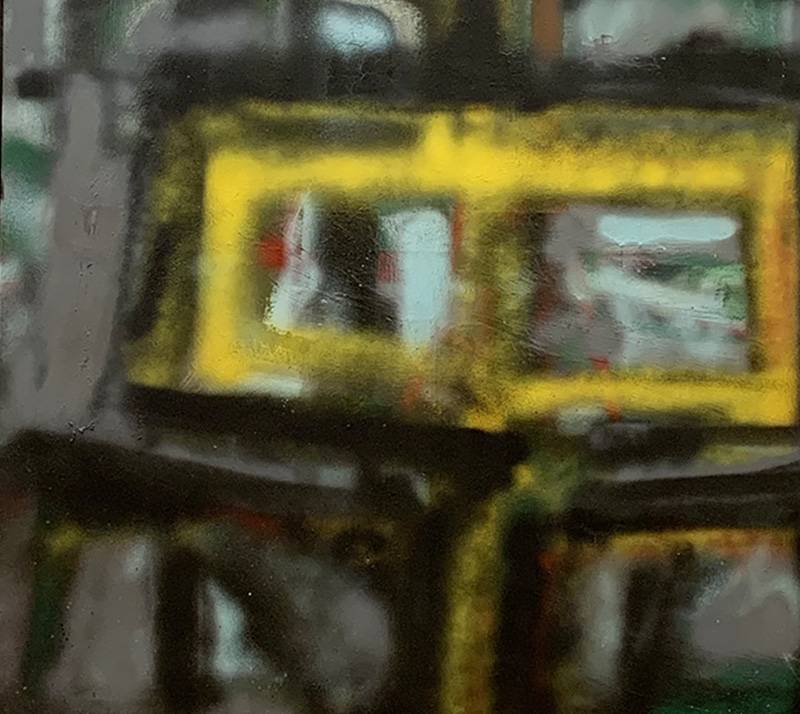You may have seen “Art Since 1948” on yesterday’s list of five things in arts for the month of September. And while I think my pitch was a strong one, perhaps it wasn’t strong enough. After spending more time at the exhibit today, then thinking about how best to distill the experience here, I’d argue that KAM could not have chosen a better way to kick off fall 2019. “Art Since 1948” is a bold, wide-ranging, extremely timely exploration of identity during periods of significant cultural and political change. By reminding us of what six decades of paradigm shifts look like through the eyes of the artist, we are perhaps better to understand the challenges of our current age and our responses to them. “Art Since 1948” is living art history seminar and a new look at work from the permanent collection in the context of several significant loans. It is both challenging and accessible, and includes everything from paintings and sculpture to lithography, photography, and video. In other words, it delivers what university art museums were designed to do.
So now the question is how best to approach this experience. Below are several strategies, followed by some of my personal highlights and some larger takeaways. Let’s get started.
Option 1: Recreate the zen approach of sitting with the art without any previous expectations or backstory I took at the recent Parkland Art and Design Faculty Exhibition
There are several works here that made for such an experience. I’d start with “Lost in the Music,” by Tourmaline and Sasha Wortzel, which presents the “what if” scenario of black transgender activist Marsha P. Johnson traveling back in time to join the 1969 Stonewall riots.
Sit on the lovely bench KAM provides and imagine traveling back in history with Johnson, complicating the narrative, experiencing this historical moment from a fresh perspective. Explore the merging of Stonewall’s memory, which haunts and inspires us to this day, with the celebration of Johnson’s own activism. The piece is vivid, engaging, and transformative. Walking a virtual mile in Johnson’s fabulous shoes will lead you down a path towards understanding and empathy. Two things are world needs a lot more of right now.
Next follow your heart or your eye to one of the many contemporary sculptures or light installations. Their siren songs are strong. And there is so much to appreciate at a purely visceral level. Just open your mind to surprising juxtapositions and see where your imagination goes. While backstory and historical context clearly deepen our understanding and appreciation of these works and their role in the exhibition, consider allowing yourself to have a personal connection to the work first.
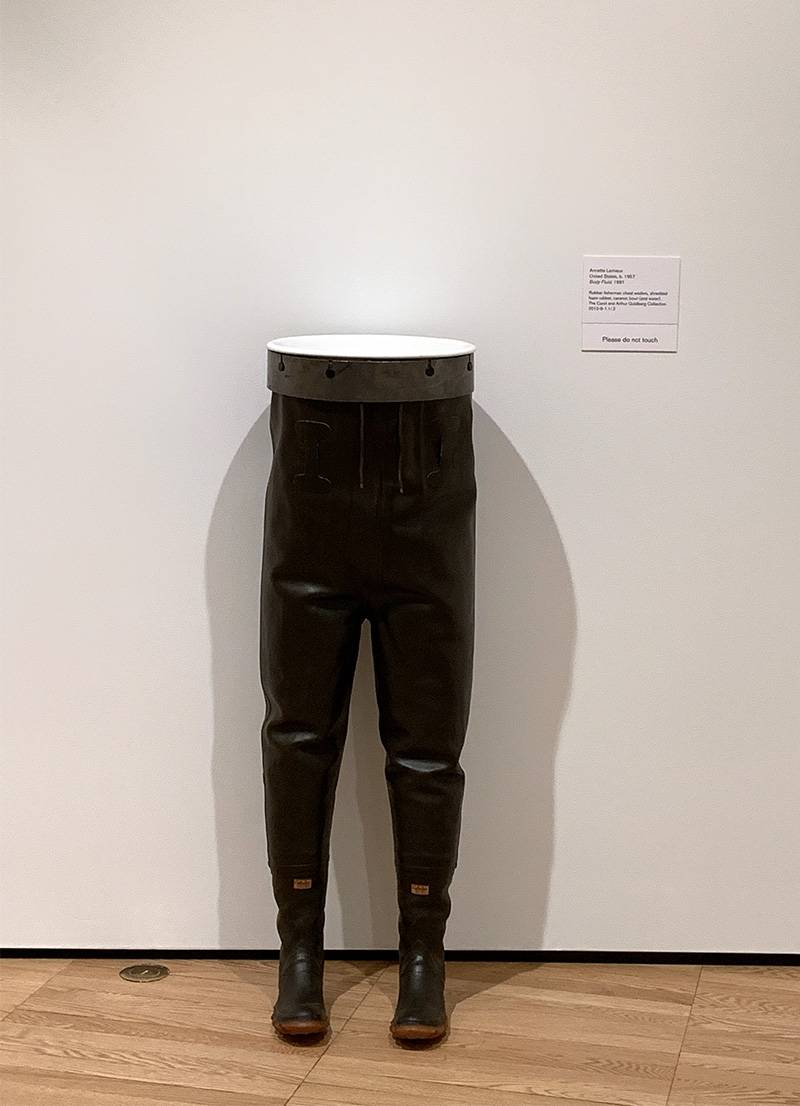
“Body Fluid,” 1991, Annette Lemieux, made from made from rubber fisherman chest waders.
Option 1 is definitely a valid approach, and one you are likely to enjoy, and perhaps even build an emotional, empathetic connection from. But I’d be remiss in suggesting that it will lead to the fullest appreciation of what curator Amy L. Powell has achieved. My best advice is to take this approach for your first walk around, then follow with one fo the following.
Option 2a: Browse through the exhibition’s website, or the recent news release from the University of Illinois to get a lay of the land, and maybe a bit of the larger cultural and historical context, then hit the show highlights first.
And by “highlights” I’m referring to the big names, the art rock stars. “Art Since 1948” brings work by modern and contemporary heavy hitters Robert Indiana, Frank Stella, and Yves Tanguy.

Standing in front of these works of large size and significance is an awe-inspiring experience in and of itself. Sharing space with so much history and creative energy is definitely worth the price of admission (or donation). Think of this as a first course. Take a walk, clear your palate, read the curator’s statements and return with the ability to appreciate the subtler notes and the arger, more “meta” implicatons of the artist’s approach and rule-breaking.
Option 2b: Take a variation on a theme and share space with the work of your personal rockstars.
As with the approach to any experience, we each bring our own lenses and intentions to the dialogue that is the meaning-making of art. With a collection that speaks so much to notions of transformation and identity, we are invited to share in the challenges, pain, and transcendant expression of those who have come before us.
Several months ago I found myself at a lecture given by artist and alumnae Louise Fishman, whose painting “Blonde Ambition,” appears in this exhibit. As I sat down, I was in no way prepared for the power of her honesty and her resiliency. As a lesbian, feminist Jewish artist coming up in 1960s and 1970s New York City, her challenges were many. I will never forget her tellling of the moment she realized that she was the only woman painter she knew. The power of this realization and the subsequent decision to fight harder to be seen as an artist is clearly apparent in the boldness of her form, her style, and her subject. For a woman, particularly one of this time period, to upend the traditionally male gaze of portrait photography and painting with a non-representational homage to Marilyn Monroe is a truly brave act of defiance and devotion. So, yes, I showed up, in large part, to share a space with Fishman, and to see her share space with so many women and gay artists. And while “Blonde Ambition,” has lived at KAM for a while, seeing it here in the starring role it deserves among its peers and in this important exhibit, took my breath away.
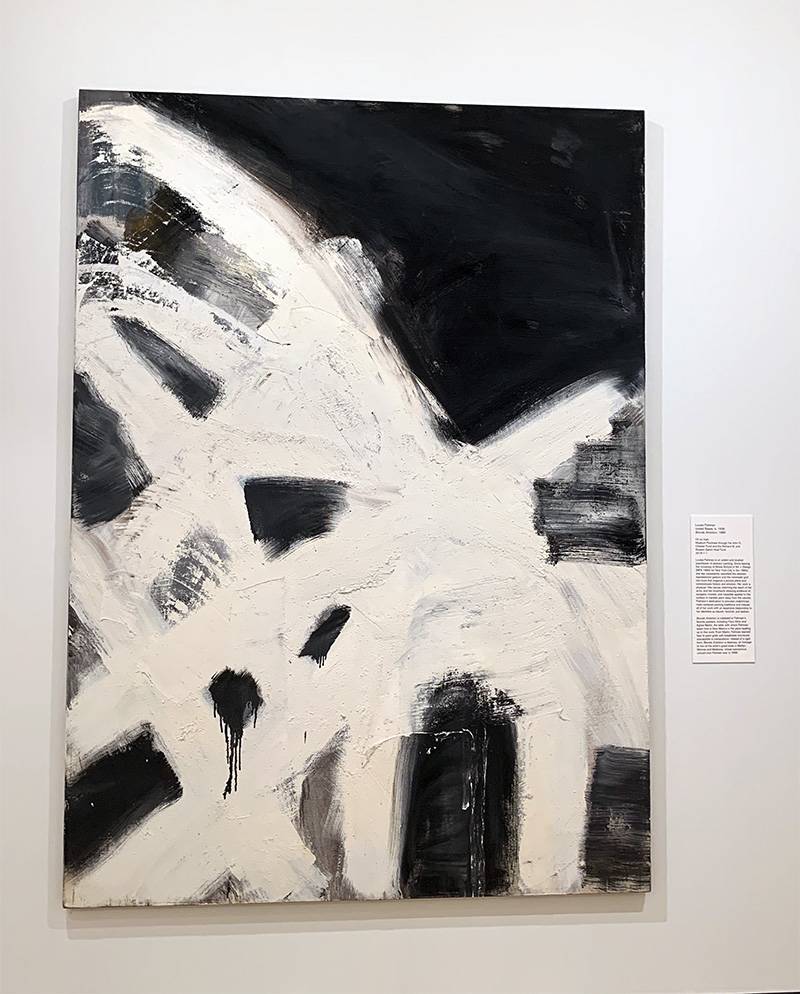
I also showed up to listen to and learn from pioneering gay artist Hal Fischer’s whose “Boy-Friends” photography portfolio series has been on my must-see list since first learning of it here.
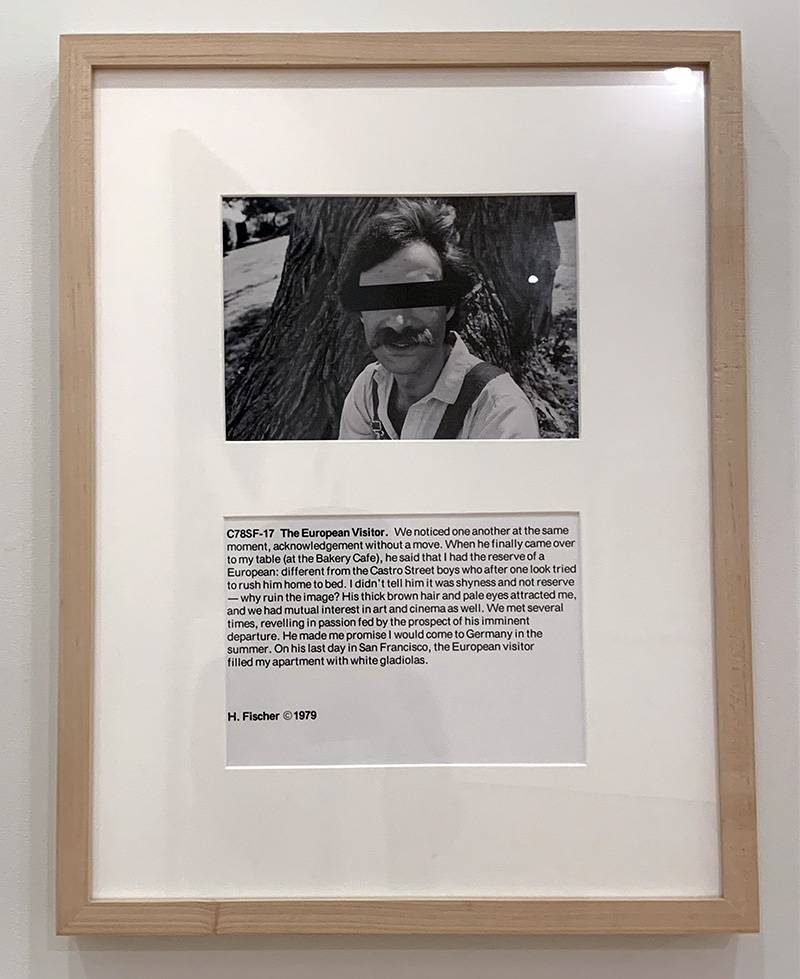
The European Visitor, Hal Fischer, 1979
The exquisite intimacy and honesty of the photos and their accompanying descriptions take us deep into these encounters, but with a surprising sweetness and innocence that belie their bravery and boldness considering the times.
Option 3: Dive deep. Read the thoughtful descriptions Powell has included throughout the exhibit. Go meta. Consider each of the works through the lens of the section titles Powell has created: Formal Depths, Positions of Empowerment, The Subject Reveals Itself, and, Signs of the Times, and Surface Memory.
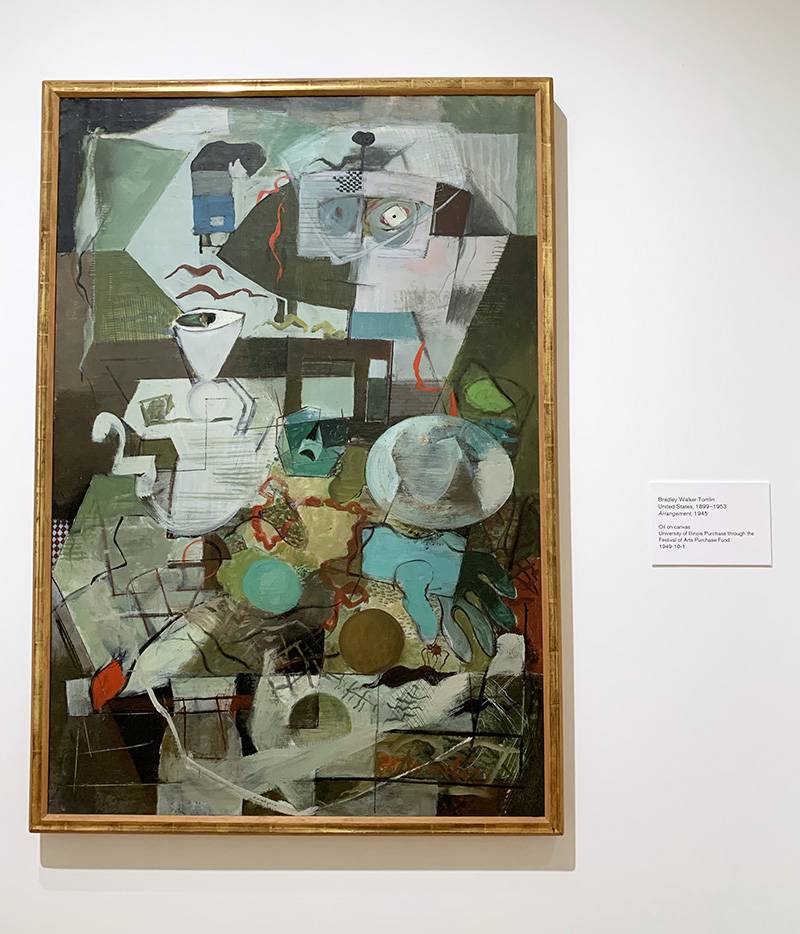
Bradley Walker Tomlin, Arrangement, 1945
There are more magical moments in this exhibition than I could possibly share here. So many important milestones mapping vast transformations in form, style, and subject over six decades. Go see “Art Since 1948” and then go again. There is so much ground to cover in this significant exhibition. Six decades of transformative art made during some of the most significanttly challenging and groundbreaking eras of cultural, political, and art history. And for several a while, it’s all right here for us to learn from and be inspired by. In challenging times we need to remember those who have broken new ground before us. Now more then ever we need to take strength and inspiration from their resiliency, their courage, honesty, and passion.
Art Since 1948
Krannert Art Museum
500 E Peabody Dr, Champaign
August 29th to December 23rd
Check museum hours here
Cover photo detail of N.Y. 1 (Road #4), Hedda Sterne, 1956. All photographs by Debra Domal








